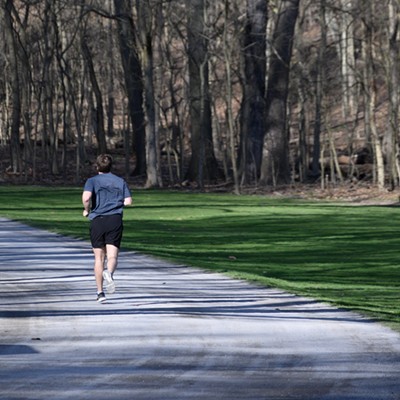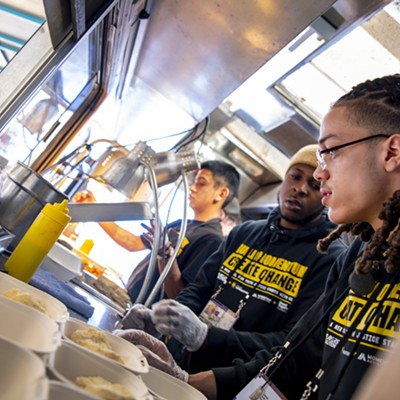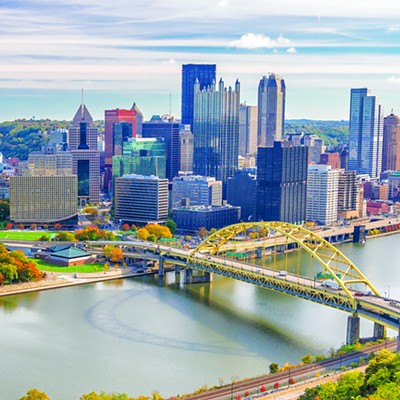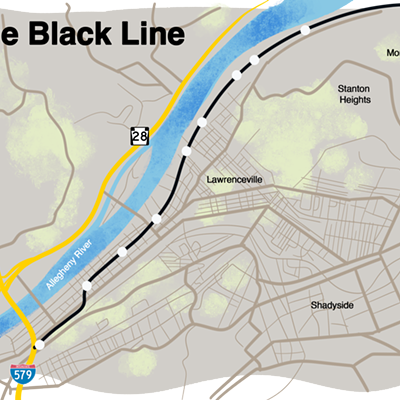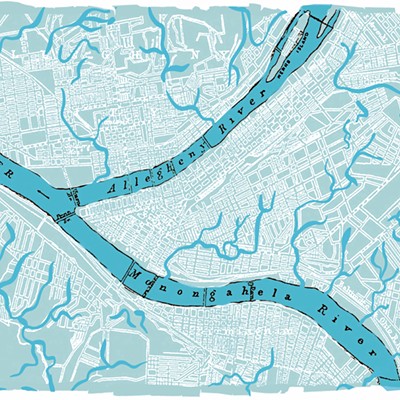
The face-off between the City of Pittsburgh and the Pittsburgh Parks Conservancy could result in a facelift for Allegheny Commons Park on the North Side.
City Council today voted to amend Mayor Ed Gainey’s proposed city budget by allocating an additional $800,000 to the Parks Conservancy. That money would be used for Phase II of a plan to restore the Commons' promenade to its former glory.
“I wanted to signal to the Parks Conservancy that we trust them to continue the good work that they do in the parks and to match the funding with private dollars,” said Erika Strassburger, D-District 8. She is primary sponsor of the amendment and chairperson of the council’s urban recreation committee.
Catherine Qureshi, president and CEO of the conservancy, welcomed the extra money from the Council. The conservancy was created in 1996 to help restore the city’s dilapidated parks.
“We’re really proud of the 26-year partnership with the city and are looking forward to improving the quality of life in Pittsburgh with all the parks,” she tells Pittsburgh City Paper.
So why the city’s change of heart?
“The government heard the public,” Qureshi says, citing letters of support from more than 20 community groups and about 65 individuals. “We were invited to submit budget priorities and we did so, and the public chimed in support and said it’s their priority, too.”
The addition to the budget comes after a Nov. 30 story in City Paper detailed a dispute between the conservancy, with its many backers, and Mayor Ed Gainey.
On Nov. 14, the mayor proposed a 2023 city budget of $658.4 million for daily operations and $164.1 million for long-term capital improvements such as buildings, vehicles, and equipment. The monies he allotted from the new Pittsburgh Parks Tax disregarded the conservancy’s request of nearly $2.9 million and contained no allocation to the conservancy. Money to the conservancy can be used to attract dollars from foundations and other sources.
In 2019, city residents approved a referendum imposing a parks tax of 0.5 mills, or $50 on every $100,000 in assessed valuation, to improve city parks, which had seen broad decline throughout Pittsburgh’s financial crisis. Among the many purposes of the tax — estimated to raise $10 million a year — are to “equitably fund parks in underserved neighborhoods” and “secure matching funds and services from a charitable city parks conservancy.”
Many community groups complained that the administration’s proposal included replacing 28 vehicles and equipment at the Schenley Park ice skating rink — expenditures they say could have been funded by regular city sources. In addition, community groups criticized the general failure of the mayor’s budget to target the neediest communities according to an equity worksheet that evaluated the most deserving communities and parks as envisioned when the dedicated tax was adopted.
Maria Montano, press secretary for the mayor, earlier countered that the city needed to make its first priority buying the tools and paying the staff to care for the 3,800 acres in the 163 parks that the city already has.
As for the $800,000 to the conservancy, Montano tells CP, “These are council amendments we’re seeing for the first time today. At this point in time, we don’t have any further comment on any of them.”
The mayor does not have a line-item veto, so he would either have to accept the amendment or veto the entire budget. Council needs to adopt the final city budget by the end of the year.
Strassburger said many of her constituents complained about how parks tax dollars would be used under the mayor’s proposal. However, she led the charge for giving the conservancy the money to improve a park outside her own East End district, which ranks low on the equity scoresheet for divvying up the money.
“Allegheny Commons serves more people than who live right next to it,” she tells CP.
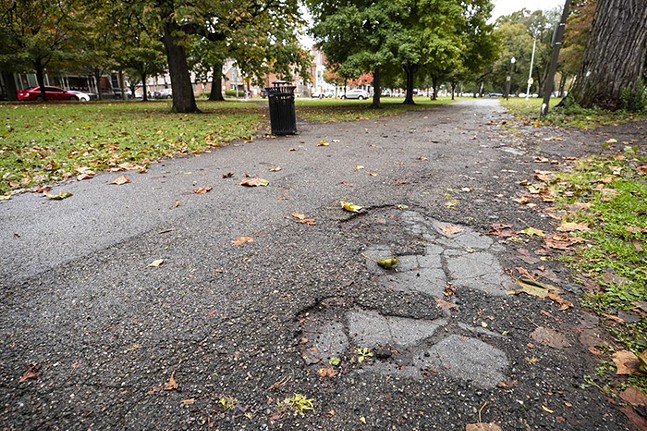
Phase II of the Allegheny Commons project would begin next year at Federal Street and North Avenue and move to Arch Street. Highlights include the following:
- Constructing a 15-foot-wide promenade a quarter mile long with accessible paths
- Planting 108 trees of 17 species, including red and sugar maples, red and pin oaks, and tulips along the promenade and eastern redbuds, magnolias, and black gums in the open lawn;
- Installing 29 energy-efficient and historically accurate lampposts, some with outlets, along the promenade and 30 historic benches; and
- Building an oval-shaped plaza around the George Washington Monument with benches and lighting for residents to gather.
The idea is to recapture some of the nostalgia of years past when long-gowned mothers pushing baby strollers and men in derby hats lounged along the well-lit promenade first built in 1876. Nowadays, the area has deteriorated to paths of broken asphalt with few benches and obsolete and graffiti-strewn pay telephones.
As a result, concert goers and nighttime sports fans who forgo the parking lots next to the stadiums may have to take a harrowing walk through dimly-lit Allegheny Commons.
“At night it’s really dark with the old-style lighting,” Qureshi says. “With the new lighting it’s safer.”
Maria Cohen, executive director of the Squirrel Hill Urban Coalition, supports council's move to advance the Allegheny Commons Project through the conservancy.
“As I look at the pandemic, it was a collective trauma for people,” she says. “All of us being able to go out in our parks and take a nice long walk is important.”
She says the lighting aspect of the project is especially important if it makes people feel safe as they walk through the park.
Jerome Jackson, executive director of Operation Better Block in Homewood, supports the conservancy but has mixed reactions to the additional money.
“I do know the Commons project is an important project for the North Side,” he tells CP. “I wish they would do the same for Homewood. All residents should be just as important."
Closer to the site, Dana Fruzynski, interim executive director of the Northside Leadership Conference, bubbled with enthusiasm over the $800,000 windfall.
"It just sends a message that the North Side is not forgotten," she tells CP. "We've been struggling with homelessness and violence. The lighting is a real issue there."


